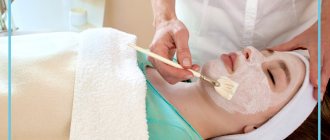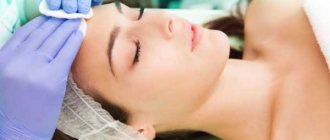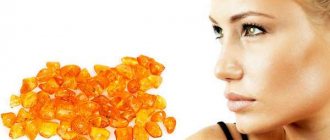Glycolic peels are the most common and popular superficial peels that can be performed by both doctors and cosmetologists and aestheticians. Of all the AHA acids, glycolic acid has the shortest molecule, containing only two carbon atoms, due to which it penetrates deeply into the skin, leads to exfoliation, and has indirect antioxidant and moisturizing effects. To reduce the aggressiveness of the acid, lactokine is added to the peeling composition. This is a one-of-a-kind active substance that contains a group of proteins isolated from milk and has a powerful anti-inflammatory effect.
Benefits of peeling
- Less traumatic and comfortable to carry out
- Does not have systemic effects
- Does not develop addiction
- Minimum rehabilitation period
- Low complication rate
- High efficiency
- Peeling can be used to correct a wide range of aesthetic problems (the optimal indication is age-related changes or prevention of aging)
Indications for peeling
- Skin withering
- Seborrheic skin
- Acne
- Hyperkeratosis
- Hyperpigmentation
- Follicular hyperkeratosis
- Ingrown hair syndrome
- Peeling can be performed as a preparation for other cosmetic procedures.
Contraindications
- Individual intolerance to peeling ingredients
- Violation of the integrity of the skin
- Active inflammatory process on the skin
- Herpes in active phase
- Severe somatic diseases
- Skin types IV–V according to Fitzpatrick
- Pregnancy, lactation
- Prolonged exposure to the sun
Home care products
- Vegelip Mesaltera Moisturizing Cream
- Prepeel Active MCP Pre-Peeling Cream
- Cleanser mousse Medic Control Pee (MCP)
Preparations required for the peeling procedure
- Cleanser mousse MCP
- Glycolic peeling Glycoliсpeel 35%, 50% or 70% (pH 1.7)
- Neutralizer
- Antioxidant mask VC-IP Mask
- Revitalizing cream Vegefarma MCP
Glycolic acid: properties and benefits for skin
Among all alpha acids with hydroxyl properties, glycolic has the lowest acidity and small molecular weight. Such features help to penetrate the skin faster and act on it. The effectiveness of the product directly depends on its pH level. At low values, the substance acts more strongly.
Glycolic acid for skin is a universal remedy for rejuvenation, cleansing and brightening. The results of its impact are visible after short-term use. The face smoothes and glows, which is why the names of many skincare products with glycolic acid contain the prefix glow. The effect is especially noticeable on aging skin, where the natural renewal of cellular structures is slowed down.
Glycolic acid helps cope with a number of problems:
- treats acne by removing dead skin particles and preventing pores from becoming clogged;
- gently removes dead cells, brightening the face;
- starts the process of rejuvenation of aging skin cells and saves from pigment spots;
- helps maintain balance for oily or problematic skin;
- Helps smooth out acne marks and small scars.
Glycolic acid destroys the compounds of dead cells, so that subcutaneous fat does not stagnate in the pores. This helps to cope with the characteristics of oily skin and gets rid of acne. Among other things, products with glycolic acid significantly tighten pores, which makes the face smoother.
Peeling protocol
Stage I. Pre-peeling preparation
For 14–21 days, Prepeel Active cream is applied to the facial skin cleansed with Cleanser mousse at night, depending on the indication. Apply MediScreen sunscreen with antioxidants in the morning.
Stage II. Chemical peeling
1 step. Cleansing. Apply Cleanser mousse to facial skin, spread with light massage movements and leave for 2-3 minutes to 20-30 seconds. Rinse with water. Step 2. Apply the peeling gel with a brush to the entire surface of the facial skin in the direction from the periphery to the center in the following sequence: forehead, temples, chin, eyelids. The signal to begin neutralization is the appearance of signs of erythema and the patient’s subjective sensations in the form of a burning sensation. Exposure time averages from 30 seconds to 5 minutes. If you experience a subjective sensation of intense burning, you should immediately neutralize the peeling composition. Step 3. Using another brush, apply the neutralizing solution to the skin in reverse order. Leave on for 2-3 minutes, then rinse with water. If necessary, repeat neutralization. Step 4 Apply the antioxidant mask VC-IP Mask. Wash off after 10-15 minutes. Dry the skin. Step 5 Apply Vegefarma cream to the skin.
Stage III. Post-peeling care
During the day, the patient should use Vegelip moisturizing cream, apply MediScreen sunscreen in the morning, and Postpeel Light cream at night. Depending on the indications, creams can be used.
Expected reactions after peeling
– Minor erythema that disappears within a few hours after the procedure. – Moderate peeling of the skin.
Peeling programs
The basic course consists of 5–10 procedures, which are performed at intervals of 7–14 days.
- For age-related skin changes, to prevent biological (natural) aging, the procedure is carried out once every 10–14 days. The intensive course includes 10 procedures 1–2 times a year. Maintenance course – 1 procedure every 1–1.5 months. In sessions 1–3, 35%–50% glycolic acid is used, starting from session 4 – 70%. The exposure time of the peeling solution is strictly individual.
- To prevent photoaging, peeling is performed once every 7–10 days. The intensive course consists of 6–10 procedures once a year. Maintenance course – 1 procedure every 1–1.5 months. In sessions 1–3, 35%–50% glycolic acid is used, starting from session 4 – 70%. The exposure time of the peeling solution is strictly individual.
- For seborrhea, peeling is performed with 35% and 50% glycolic acid once every 7–10 days. The course is selected individually.
- For acne, peeling is performed with 35% and 50% glycolic acid once every 7–10 days. Peeling is performed for mild acne (no more than 7–10 inflammatory elements). It is preferable to begin the course of treatment with peelings with salicylic or mandelic acids.
- For hyperkeratosis, formulations of varying concentrations are used depending on the age of the patient. The course includes up to 10–12 procedures.
- For hyperpigmentation, it is recommended to use Glycolicpeel Whitening peel in combination with depigmentation therapy with Medilight. The main rule is to carefully influence areas of dyschromia!
- In preparation for plastic surgery, a course is prescribed consisting of 5-6 procedures with 50% acid, then 3-4 procedures with 70% acid with an interval of 10-14 days.
How glycolic acid peeling treats skin imperfections
How glycolic acid peeling treats skin imperfections
Glycolic peeling can please any beauty with its results. It effectively solves problems such as wrinkles, pigmentation, enlarged pores. And thanks to its mild effects and wide range of indications, it has become one of the most common salon procedures. Expert Clinics services Thread face lifting The result lasts up to 5 years, and biocompatible mesothreads are safe for health. Thread face lifting Facial contouring This is a way to avoid surgery or postpone it for a long time. Facial contouring Facial mesotherapy Copes perfectly with dry and dehydrated skin, helps get rid of dark spots and wrinkles. Facial mesotherapy Call me back What is glycolic peeling The active component of this peeling is glycolic acid. Once on the surface of the skin, it damages epidermal cells, causing exfoliation and promoting cellular renewal. The percentage of glycolic acid content can be either low or high and varies from 5 to 70%. Such a high percentage is necessary for deeper chemical peeling. Unlike other fruit peels, glycolic peels have their own characteristics: Contained in green grapes and sugar cane; It has a small molecular weight, so it penetrates the stratum corneum more easily; Has a gentle effect on the skin; Affects the structure of the dermis, stimulating the production of hyaluronic acid and collagen. Therefore, glycolic peeling is also called remodeling. When is a glycolic acid peel needed? Indications for glycolic peeling are: - fine wrinkles; - thinning of the dermis; - loss of firmness and elasticity; - thickening of the stratum corneum (hyperkeratosis); - pigmentation; - dermatosis; - stretch marks on the face and body; - oily skin, in particular, excess sebum, shine, enlarged pores, comedones; - post-acne. Glycolic peeling is also suitable as a preparatory step for more aggressive procedures. Sign up for a consultation Stages of the peeling procedure The stages of glycolic peeling are as follows: 1. Cleansing the skin of decorative cosmetics, dust particles and excess sebum. 2. Applying degreasing lotion. 3. Application and distribution of peeling. To soften the skin, a composition with a lower concentration is applied first, followed by the main product. At this moment, a slight burning sensation is possible. This way you can feel that the acid has begun its work. 4. Maintaining the composition. The time is determined for each person individually and usually takes several minutes. 5. Neutralization of the composition. It is carried out using a specialized solution that neutralizes the acid. 6. Applying a soothing cream or mask. The duration of the entire procedure is on average from 35 to 45 minutes. How to properly care for your skin after a glycolic acid peel? The main advantage of this type of peeling is the absence of discomfort after the procedure, even with sensitive skin. Side effects may include a tingling sensation, slight redness, and peeling. The composition of the glycolic peeling acts softly and delicately, so it does not require a recovery period. To eliminate any complications, experts recommend adhering to a number of rules: - Protect your skin from ultraviolet rays using SPF products; — Refrain from using decorative cosmetics; — For 2-3 days, exclude strong physical activity, going to the sauna, bathhouse, solarium, swimming pool. To eliminate skin imperfections, 2-3 procedures may be needed. anti-aging treatments require approximately 6-7 sessions. Peeling with glycolic acid at home Many girls prefer to carry out glycolic peeling on their own at home. True, cosmetologists do not approve of this approach. At home, the use of the drug is allowed within 5-7%. But you need to keep in mind that the process requires special care and attention, since if the procedure is carried out incorrectly, the risks of unpleasant consequences increase. And incorrect actions may not only fail to improve the quality of the skin, but also cause an allergic reaction. In addition, the compounds purchased in the store may not be of the highest quality. Therefore, it is better to trust your beauty and health to professionals. Effect after peeling with glycolic acid Glycolic peeling is an affordable, low-traumatic procedure. It has a comprehensive effect on the skin, due to which: - the skin texture is smoothed; — pigmentation is eliminated or becomes less noticeable; - shallow wrinkles go away; — acne weakens; - post-acne lesions become less noticeable; - pores are cleaned and reduced; - water balance is restored; - elasticity and firmness returns to the skin. Sign up
2021-09-01
2021-10-05
Expert Clinics
Expert Clinics
How glycolic acid peeling treats skin imperfections
How glycolic acid peeling treats skin imperfections
How glycolic acid peeling treats skin imperfections
Glycolic acid for face
The uniqueness of glycolic acid is that it is suitable for any skin type. However, sensitive skin requires more careful treatment, so you need to start using the product carefully, with long breaks and in low concentration. Gradually, the skin will get used to the use of acid, and it will be possible to regularly use peelings and tonics.
Glycolic acid for the face is found in various cosmetics:
- In the scrub. Abrasive substances for mechanical cleaning of the skin are often combined with acids. This product is effective, but quite aggressive, so it is not suitable for daily use.
- In peeling. Published research in the National Library of Medicine confirms that chemical peels help combat the effects of acne, seborrhea, melasma, acne, and post-inflammatory hyperpigmentation. Glycolic acid tightens pores, improves skin tone, normalizes sebum production, and smoothes out scars.
- In cream. Glycolic acid gently and effectively cleanses pores. Includes daily care for problem skin.
- Wearing masks. The active substance is combined with moisturizing components, which allows you to simultaneously cleanse and nourish the skin. Gives a rejuvenating effect.
- In tonics, gels and foams. Glycolic acid helps thoroughly cleanse pores and remove excess subcutaneous sebum.
- In serums. Used for skin with signs of aging. Rejuvenates the face, gets rid of age spots, gives the skin a healthy look.
Glycolic acid is a stimulator of new cell growth. Regardless of skin type, it increases collagen levels, smoothes wrinkles and restores a blooming appearance to the face.










